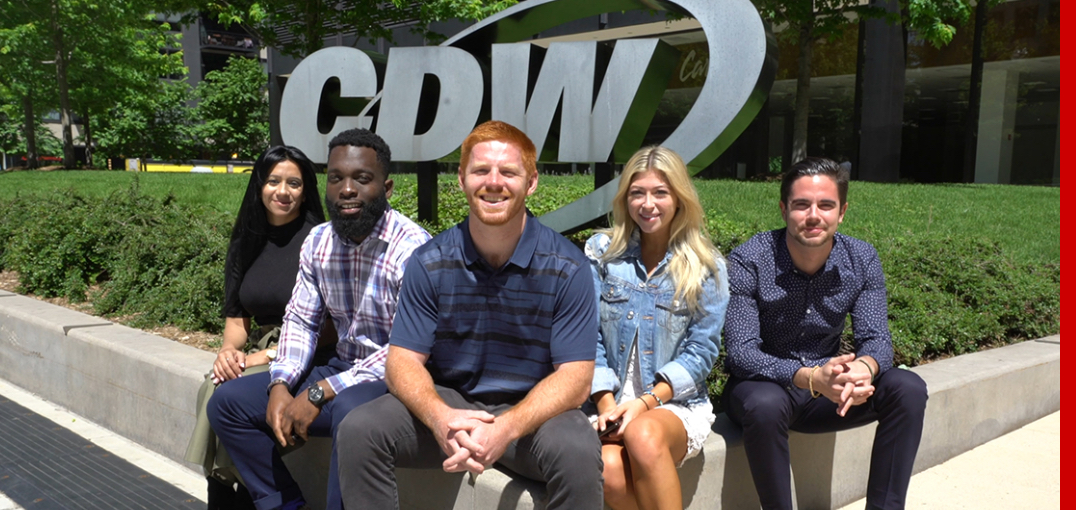National Disability Employment Awareness Month with Liz Edwards

At CDW, we’re committed to fostering an inclusive culture and accessible environment for all coworkers. This National Disability Employment Awareness Month, we talked to Liz Edwards (she/her), Instructional Designer, to hear her story and experience managing an invisible disability in the workplace.
Tell us about yourself and your role at CDW:
I’m an Instructional Designer, and I help design training content for Sales and Integrated Tech coworkers.
If you are comfortable, would you please share your disability and how CDW has supported you/provided you with an accommodation (if any)?
I have attention-deficit/hyperactivity disorder (ADHD). This means that certain organizational tasks are harder for me. My manager has been so supportive in helping me navigate those challenges. When I’ve identified development opportunities in areas like project management, she helped me find a Project Management certification that I took to learn more best practices and tips.
CDW also provides great resources in tools like LinkedIn Learning, where I was able to learn some tricks to managing my inbox. Additionally, CDW’s flexibility with working remote has been incredibly impactful for me, as I’m able to focus so much better at home without the distractions of the office.
"While we often talk about ADHD as a disability, we don’t speak enough about the ways that it is a huge asset. My ADHD enhances my ability to creative problem solve and think outside the box."
What tips can you share for managing ADHD in the workplace?
In the office, it’s much more difficult for me to navigate ADHD than it is at home. When the office gets loud and I’m having a harder time focusing, I will sometimes book a conference room for some focus time. I also really like to use the whiteboards because they allow me to move around and physically organize my ideas.
When working from home, I will storyboard my ideas on paper. I take very detailed notes in meetings because this keeps me focused. In terms of organization, I highly recommend looking into different project planning templates that will help you organize your work. I also recommend setting up inbox rules and using folders to help manage your inbox. Finally, I’ve found that blocking off time on my calendar for focus time, setting reminders and making to-do lists have been helpful for me.
In what ways has your ADHD been an asset in your work at CDW?
While we often talk about ADHD as a disability, we don’t speak enough about the ways that it is a huge asset. My ADHD enhances my ability to creative problem solve and think outside the box. Instead of simply focusing on a single ask or problem, I am able to take a step back and look at the big picture, identifying ways that we can improve our processes and take a more strategic approach.
My ADHD makes me great at brainstorming and coming up with new ideas. Because I design training content, it also gives me a unique perspective into the eyes of a learner. Because of my experience, I naturally think about how to make training content more engaging and ways that we can make our programs more accessible. My ADHD has forced me to learn in ways that are creative, and I can apply those same practices when building activities.
What do you want others to know about coworkers who are neurodivergent?
One piece that is so important for neurotypical people to recognize is the fact that everyone’s brains work differently. I think it is so important to have conversations with coworkers about how they like to communicate and how we can support each other in achieving success. It is also essential to constantly work on dismantling our own stereotypes around ADHD and other invisible disabilities. Breaking down the stigma around mental health is a key step in cultivating a safe environment for people to obtain the resources they need.
Why is involvement in CDW’s Alliance for Business Leading Equality (ABLE) BRG important to you?
ABLE does amazing work in providing visibility and representation for our coworkers with disabilities. Like all of our BRGs, this can be so impactful for coworkers who might otherwise feel isolated. It also benefits coworkers without disabilities, as it provides resources and information to learn how to be a better ally.
Overall, BRG involvement drives a culture of inclusion where all of our coworkers and their unique backgrounds, identities and experiences can feel seen.
– Liz Edwards


